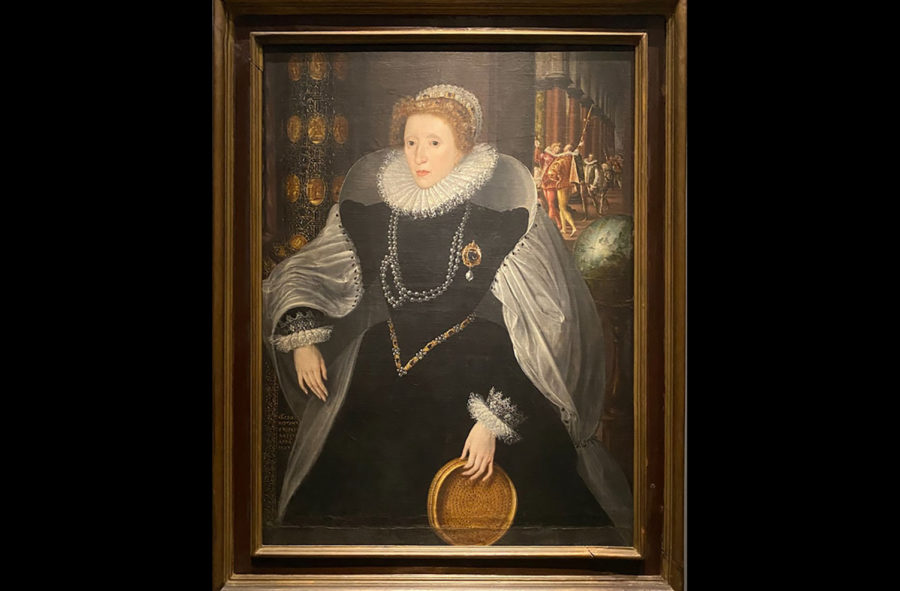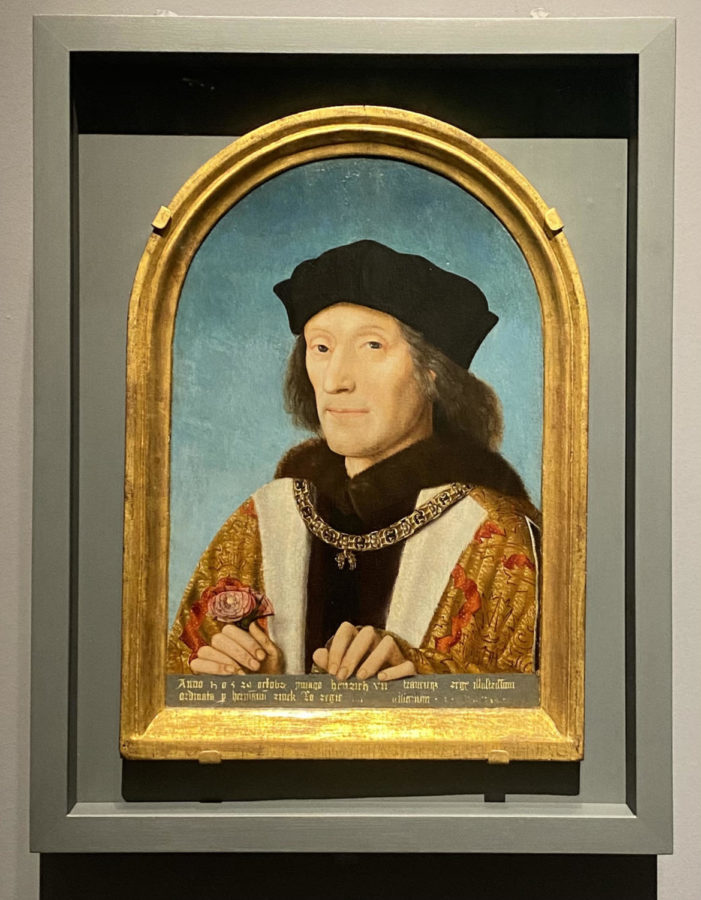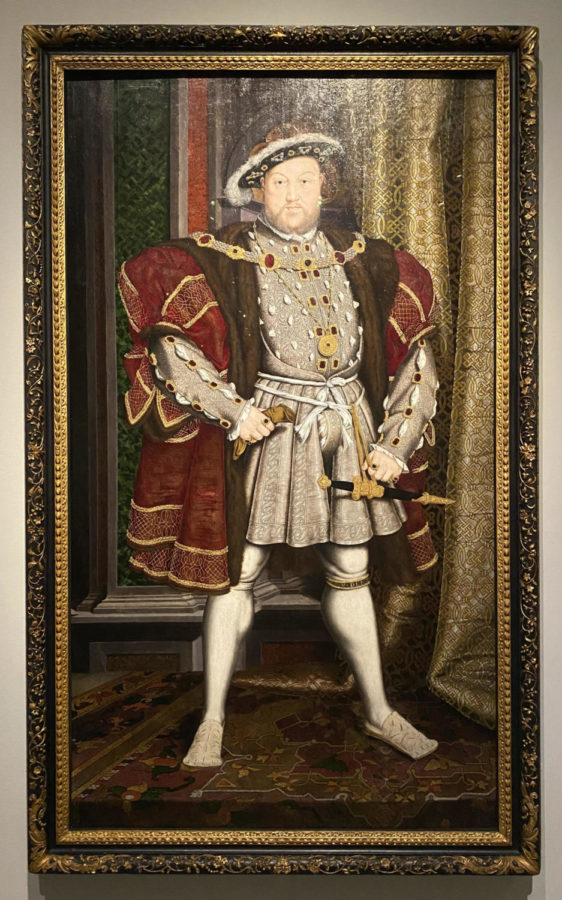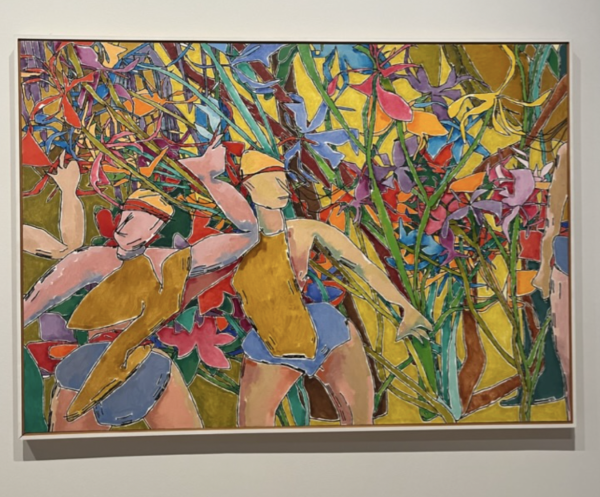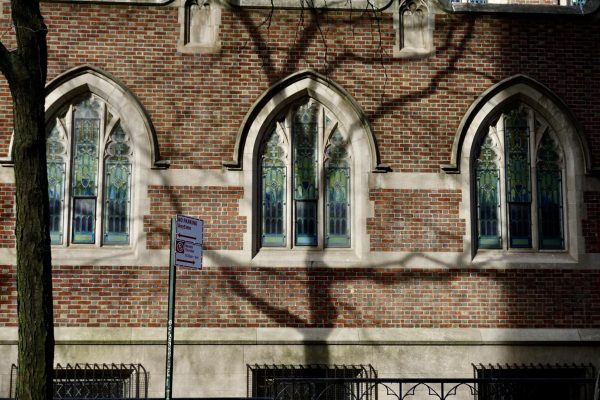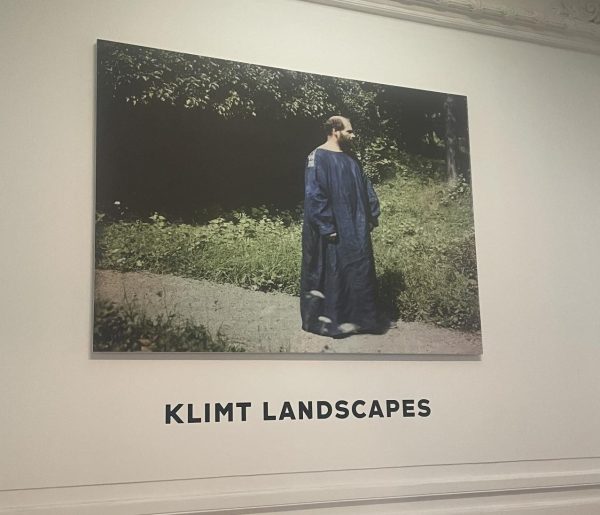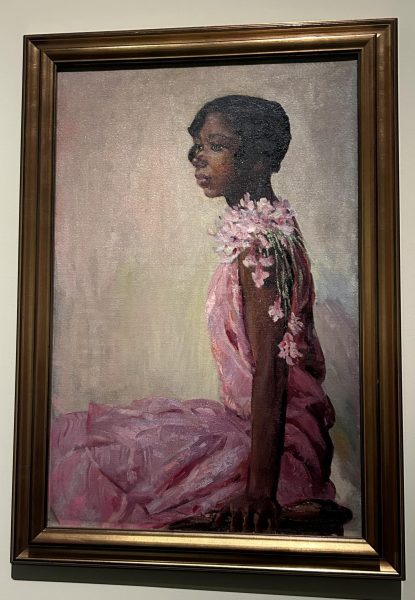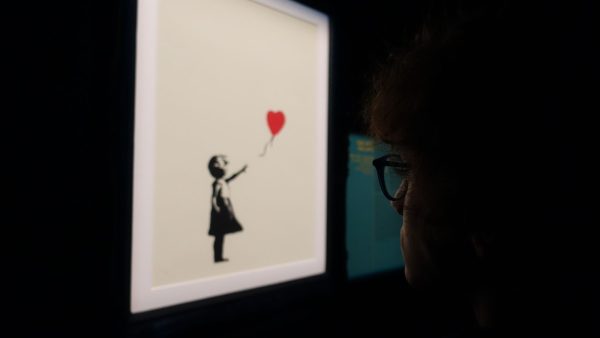Akin in Beauty to a Tudor Rose: A Review of ‘The Tudors: Art and Majesty in Renaissance England’ Exhibit at the MET
Tudor England was a hotbed of artistic innovation. Religious persecution in surrounding states forced a plethora of thinkers and merchants into English territory. The MET Museum highlights how the nation’s culture of creativity began to bloom.
Portraits of Elizabeth are plentiful; they were used as a political tool to legitimize her reign.
Upon concluding the Wars of the Roses, Tudor England blossomed. Henry VII inaugurated a new political era, rising to power in 1485 and sowing the seeds of a strong English monarchy. Catalyzed by economic globalization and centralized authority, the budding kingdom began to grow. But even a Tudor rose has its thorns.
Perhaps the most threatening among them was doubt surrounding the legitimacy of King Henry VII. Northern citizens refused to welcome a Welsh ruler, instead backing the Yorkist Richard III. Large swaths of the latter’s supporters were killed in the Wars of the Roses, assisting Henry Tudor in obtaining the throne yet breeding fierce opposition over time.
The art and culture of this time is the subject of an exhibit, ‘The Tudors: Art and Majesty in Renaissance England,’ currently on display at the Metropolitan Museum of Art (1000 5th Avenue in Manhattan) until January 8th, 2023.
Portraiture was often employed to combat mounting unpopularity. One 1505 painting, entitled King Henry VII, depicts a Tudor rose in the monarch’s right hand, emblematic of his hold on government. Inscribed underneath is a Latin phrase, indicating that the work was completed on October 29th and was commissioned by Herman Rinck, an agent for the Holy Roman Emperor, Maximilian I.
Beyond political jurisdiction, Henry VII sought after financial security through religion. In a corrupt attempt to profit off of the Catholic Church, the king ordered bishops to frequently change their place of residence, operating under a legal loophole which allowed him to receive the income from their empty estates.
In direct contradiction to this sacrilege, Henry VII nonetheless revered religious art. He bought ten exceedingly large tapestries from Belgian textile merchants, featuring a tale entitled Story of the Redemption of Man. Within the set is Creation and Fall of Man, which juxtaposes humanity’s sinful inclinations with more virtuous behaviors. The tapestries tell a collective story of Christian history, from the Creation (as seen in the MET exhibit) to the Last Judgment.
Further demonstrative of Henry VII’s religious inclinations are the sculptures of Saint John the Evangelist and an Unidentified Saint. The two are among thirty two figures meant to encircle the king’s grave as a form of protection, thereby immortalizing his soul. The bronze statuettes line his tomb, working along the Westminster Abbey church to legitimize the Tudor reign.
Henry’s commitment to the church manifested itself in the form of over thirty vestments. Woven using the finest Italian velvets, the capes were lavish in nature. One, displayed in the exhibition, features the symbol of the king’s maternal family, the Beauforts. Surrounded by swirling vines of red and Tudor roses, Henry VII emblazoned the English throne with his family’s legacy.
His son was not unlike him; Henry VIII similarly used his piety to garner power. “It’s one of the first things you learn in any history class,” said Vivian Yellen ’23. “Religion and politics were heavily intertwined at the time.” Following his radical decision to merge church and state by declaring himself the Supreme Head of the English Church, biblical illustrations began to visualize the king’s new role.
The Coverdale Bible is indicative of this development, depicting Henry VIII passing out bibles to various knights and clergymen at the bottom of its first page. Adjacent is the ruler’s personal copy of the Great Bible, the first legal translation into English. Towards the top of its title page, Henry converses directly with God— irreverent and inconceivable mere years prior.
The second Tudor monarch additionally derived power from his military prowess, and more often, jousting skills. Field Armor for King Henry VIII emphasizes his physical stature; the suit is wide and intimidating. It lacks plates below the knees, indicating that it was intended for both combat on foot and on horse. It likely saw battle in 1544, when the English monarch besieged Boulogne to counter French king François I, his longtime rival.
With the same intention of asserting Henry VIII’s power, Hans Holbein the Younger painted Henry VIII in 1540. The full-length likeness is unique for its time, as portraits were traditionally limited to the shoulders and face. In portraying his entire body, however, feet planted in a firm stance, Hans Holbein assists in perceptually solidifying Henry’s regime.
These “opulent, full-length portraits,” writes New York Times critic James Barron, “are anything but caricatures. They tell something about the Tudors’ struggles to claim and retain their power.”
Smaller in size yet likewise powerful is Infant Christ Pressing the Wine of the Eucharist. The minuscule tapestry was among many in possession of King Henry VIII, who ordered London-made copies of those owned by his first wife, Katherine of Aragon. Woven into the small fabric is an infant Christ, who locks eyes with onlookers.
The child encourages us to ponder Christ’s predetermined fate to die a hero, evident in a reflection of the savior’s hand within a glass orb before him. Squeezing grapes into a chalice, infant Christ predicts the conversion of the Eucharistic wine into his blood. Behind the foreground is a pomegranate in a cup, emblematic of the fruit of the Virgin’s womb.
This appreciation for luxury ran in the family, down to Henry VIII’s daughter, Elizabeth I. New Year’s Gift Roll of Elizabeth I, Queen of England, dated 1585, showcases her meticulous attention to detail and penchant for power. The monarch kept an inventory of the ritual New Year’s exchanges between the Tudors and their subjects, listing gift givers in order of rank, from aristocrats to artisans. Completed with her sign manual, Elizabeth I must have taken family holidays very seriously.
Equally resolute is her expression in Elizabeth I (The Sieve Portrait), painted in 1583. Quentin Metsys the Younger added an unconventional accessory to her somber, black attire: a sieve. Roman legend posits that sieves represent purity in a woman, an epic of which the queen took full advantage. She used the iconography to affirm her power as a ruler, neglecting the more conventional role of wife or mother.
Further rife with symbolism is Elizabeth I (The Rainbow Portrait). Marcus Gheeraerts the Younger paints her as ageless and alluring, despite the fact that the work was completed towards the end of her reign in 1602. She grips a rainbow in her right hand, providing her with the sun’s supernatural ability to shed light upon her subjects and bring about colors after a storm. Her clothing similarly makes allegorical references to her political authority. The embroidered serpent on her left sleeve implies that she is wise, while the eyes and ears on her cloak indicate that she is omniscient.
The same artist completed a full-body portrait of the queen just ten years earlier, entitled Elizabeth I (The Ditchley Portrait). Dressed in extravagantly bejeweled garb, she stands atop a map of southern England. Various inscriptions throughout the canvas translate this motif into words, reading “She gives and does not expect” and “She can but does not take revenge.” Behind her, the sky is starkly split between illuminating sunshine and a cloudy storm, adding to the portrait’s dramatic effect.
In opposition to Elizabeth I was her very own sister, Mary I. Mary sought the re-establishment of Catholicism in England after Elizabeth’s declaration of Protestantism, a belief which is illustrated in the 1554 portrait Mary I by Hans Eworth. She dons a large cross around her neck which belonged to her mother, whose Spanish heritage shaped Mary’s divine views.
The MET Museum exhibition tells the tall tale of the Tudors historically, but less so artistically. Curator Elizabeth Cleland said that the show emphasizes “glorious works of art” rather than “illustrating history.” I cannot say that I completely agree. On display are various desks, goblets, and suits of armor, all of which function to cohesively create a narrative on life in sixteenth century England, but not on art.
The exhibit’s thesis is, in short, that Tudor England emphasized luxury and fine art. This phenomenon came across in various portraits, but was not as prevalent in the selection of pieces holistically. Nevertheless, the show is exceptional, serving as a riveting time capsule into the English epoch. It is akin in beauty to a Tudor rose.
Nevertheless, the show is exceptional, serving as a riveting time capsule into the English epoch. It is akin in beauty to a Tudor rose.
Sela Emery is a Copy Chief for 'The Science Survey.' She focuses on art history, covering relevant art pieces and exhibitions with each issue. In addition...

